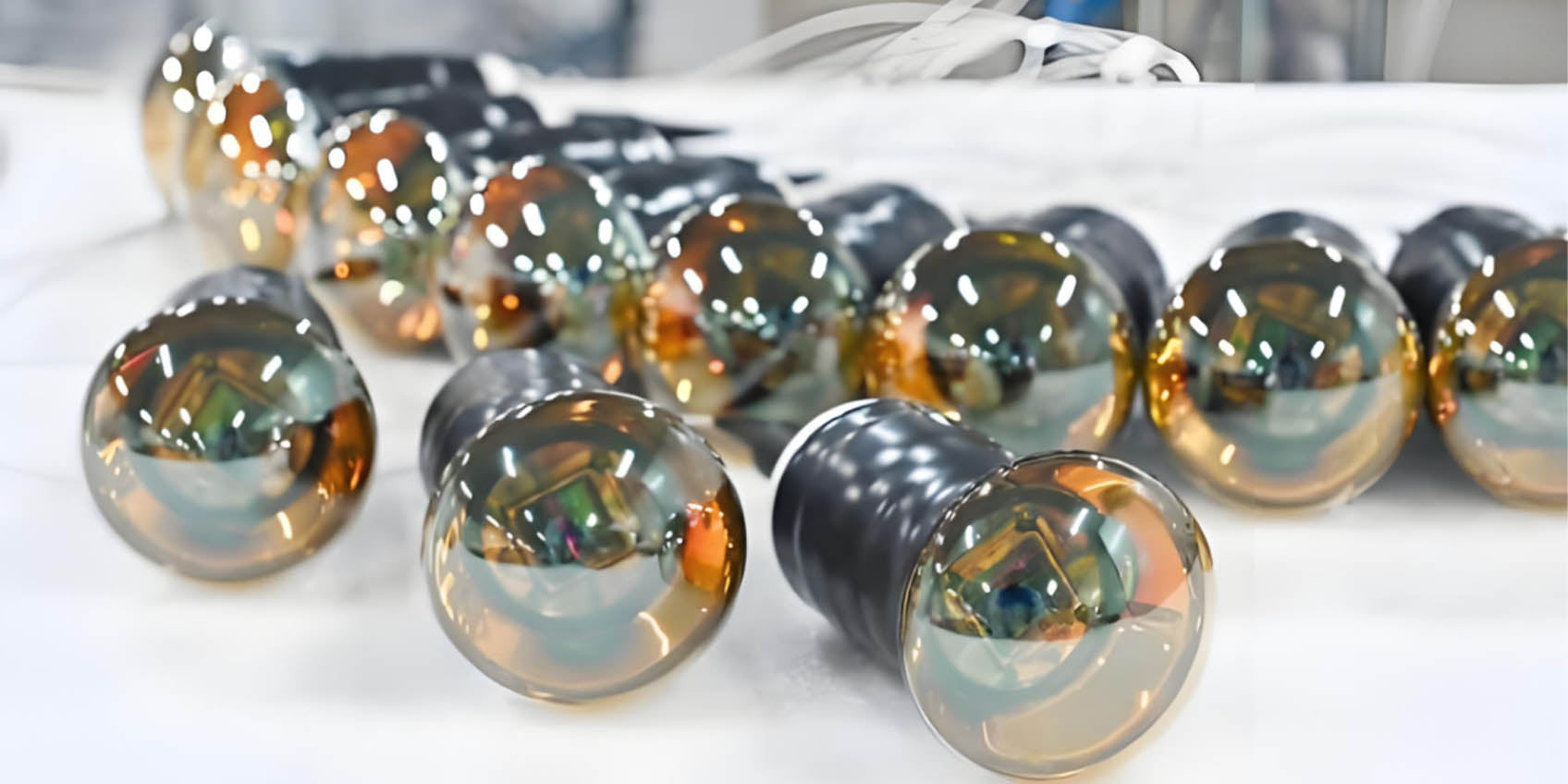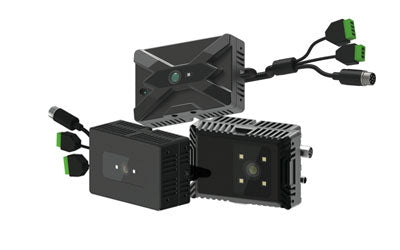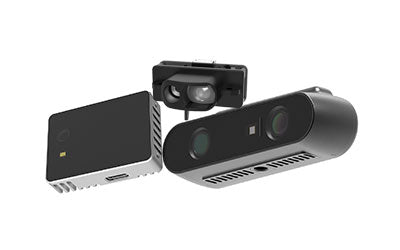PMT and ToF Technology: Enhancing Precision and Applications in Vision
- por TofSensor

With continuous technological advancements, the combination of PMT (Photomultiplier Tube) and ToF (Time-of-Flight) sensors is bringing revolutionary changes to various industries. PMT, known for its high sensitivity to light, effectively detects extremely weak light signals, while ToF technology measures the time it takes for light pulses to travel from the sensor to an object and back, enabling precise distance calculations. Together, these technologies are elevating the accuracy and efficiency of various intelligent vision applications, especially in 3D imaging, depth sensing, and real-time monitoring.
What is PMT (Photomultiplier Tube)?
A Photomultiplier Tube (PMT) is a highly sensitive optical sensor used to detect weak light signals. The working principle of a PMT is to convert incoming photons (light signals) into electronic signals and amplify them through multiple stages of electron multiplication. This process significantly boosts the signal, enabling the detection and measurement of extremely weak light signals. PMTs consist of a photocathode, a multiplication tube, and an anode. The photocathode converts light signals into electrons, which are then accelerated and multiplied through various stages to generate a sufficiently strong electronic signal for further processing.
How Does PMT Work?
When photons strike the photocathode in a PMT, electrons are emitted (photoelectric effect). These electrons are then accelerated and pass through multiple multiplication electrodes (called dynodes). Each dynode stage amplifies the number of electrons, so even weak light signals are amplified to generate a strong enough signal. This amplification effect makes PMTs unparalleled in detecting low-intensity light sources, especially in low-light environments or applications requiring high sensitivity.
Applications of PMT
Due to its exceptional sensitivity, PMT is widely used in applications requiring high-precision detection of weak light signals:
-
Astronomical Observation: PMTs are used in telescopes and star detectors to capture faint light signals from distant celestial bodies, aiding in astronomical research.
-
Nuclear Physics: PMTs play a crucial role in nuclear physics experiments, especially in radiation detection and particle tracking, offering precise responses to weak light signals.
-
Medical Imaging: In medical imaging, PMTs are used in Positron Emission Tomography (PET) and Single Photon Emission Computed Tomography (SPECT), enabling the capture of weak light signals emitted by radioactive tracers for accurate internal imaging, assisting in diagnosis and treatment.
-
Biomedical Research: PMTs are employed in fluorescence microscopy and flow cytometry for detecting weak fluorescence signals from cells and tissues, helping scientists conduct cellular-level analyses.
-
High-Energy Physics: PMTs are extensively used in particle accelerators and lab experiments, detecting faint light signals produced by particle interactions to support high-energy physics research.
-
Environmental Monitoring: PMTs are also used in special environmental monitoring devices, such as radiation or pollution detectors, to capture light changes, helping detect harmful substances or radioactive materials.
Advantages and Challenges of PMT
The main advantage of PMTs is their extremely high sensitivity and precision. Unlike other optical sensors, PMTs can reliably detect signals in very low light conditions, making them ideal for weak signal detection. Their high gain and low noise characteristics make them the preferred choice in many high-precision applications.
However, PMTs also face some challenges. They are relatively complex in structure and sensitive to electromagnetic interference, requiring specific operational environments and higher maintenance costs. Additionally, PMTs have lower energy efficiency compared to newer solid-state sensors and may not be as suitable for long-term monitoring applications.
What is ToF Sensor?
A ToF (Time-of-Flight) sensor is a technology that calculates the distance between the sensor and an object by measuring the time it takes for a light pulse to travel from the sensor to the object's surface and back. ToF sensors are capable of real-time depth imaging or 3D point cloud data generation, making them widely used in 3D imaging, robotics navigation, and autonomous driving. Their precise depth sensing capabilities make them a core technology in modern smart devices.
The Benefits of Combining PMT and ToF
When combined, PMT and ToF technologies enhance sensor performance, especially in complex environments, such as low-light or high dynamic range scenarios. Specifically, PMTs can significantly improve the sensitivity of light pulses, providing more stable data for ToF sensors under low-light conditions. This combination brings several key advantages:
-
Enhanced Depth Perception and 3D Imaging
The integration of PMT and ToF sensors allows for more accurate distance measurements and high-quality 3D images or point cloud data. This is crucial for 3D scanning, architectural measurements, virtual reality (VR), and similar applications, offering detailed and accurate spatial information. -
Precise Measurement in Low-Light Conditions
ToF sensors can face challenges in low-light or dark environments. However, by utilizing PMT’s high sensitivity, the combined system ensures that ToF sensors continue to deliver stable and accurate data in various lighting conditions, making it ideal for nighttime monitoring, security, and autonomous driving applications. -
Faster Sensor Response Time
PMT’s high sensitivity boosts the reflection signal of light pulses, enhancing the response time of ToF sensors. This increased speed not only improves real-time data acquisition but also boosts the precision and responsiveness in machine vision, robotic navigation, and other applications.
Applications of PMT and ToF in Various Fields
The combination of PMT and ToF technologies not only enhances depth perception and spatial mapping but also drives intelligent development across numerous industries. Key applications include:
-
Autonomous Driving: In autonomous vehicles, ToF sensors help detect surrounding obstacles, pedestrians, and traffic signs. The integration of PMT’s sensitivity ensures stable and accurate data collection even in low-light or complex environments, improving driving safety.
-
Intelligent Security: Combining PMT and ToF technology is useful in smart surveillance systems, especially for nighttime or low-light conditions. ToF sensors provide depth perception, while PMT enhances detection sensitivity, enabling clearer identification of intruders and improving security.
-
Industrial Inspection: In industrial production, the integration of PMT and ToF enables precise 3D scanning and object shape detection. By offering high-precision depth perception, the system can detect minor defects or flaws on production lines, helping to reduce defects and improve product quality.
-
Medical Imaging: The combination of PMT and ToF can also be applied in medical imaging, particularly in procedures requiring high sensitivity and precise measurements. PMT provides powerful optical detection capabilities, while ToF delivers high-precision 3D imaging, helping doctors to observe organs and abnormal areas with greater clarity.
Future Outlook
As both PMT and ToF technologies continue to evolve, their combination will further propel the development of intelligent vision systems. With ongoing improvements in hardware and innovations in algorithms, PMT-enhanced ToF sensors will offer precise, efficient depth sensing and real-time data support in more complex scenarios. The combination will play a vital role in industries such as autonomous driving, smart security, medical imaging, and industrial inspection, becoming an essential technology in the field of intelligent vision systems.
In summary, the integration of PMT and ToF technologies provides higher-precision depth sensing, stable performance in low-light environments, and faster sensor response times. As the technology progresses, their combined use will expand across a wide range of applications, helping drive smart upgrades in various industries and delivering more accurate, efficient intelligent vision experiences.
Conclusion
The integration of PMT and ToF technologies is revolutionizing the field of intelligent vision systems. With continued advancements, these technologies will play a significant role in a wide range of applications, pushing industries toward greater automation and providing more precise, efficient intelligent vision solutions.
Synexens 3D Of RGBD ToF Depth Sensor_CS30

Our professional technical team specializing in 3D camera ranging is ready to assist you at any time. Whether you encounter any issues with your TOF camera after purchase or need clarification on TOF technology, feel free to contact us anytime. We are committed to providing high-quality technical after-sales service and user experience, ensuring your peace of mind in both shopping and using our products.
-
Postado em
CS30




